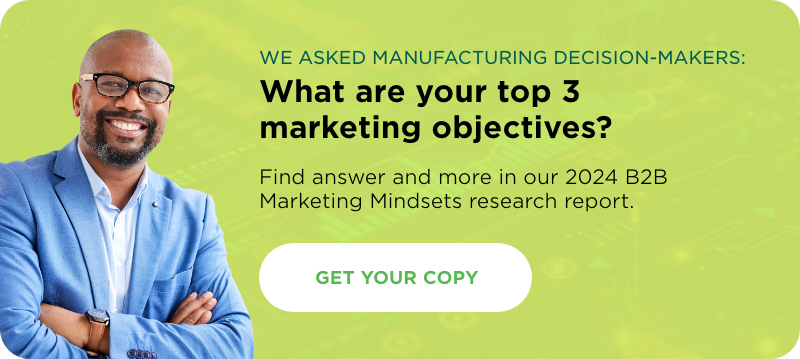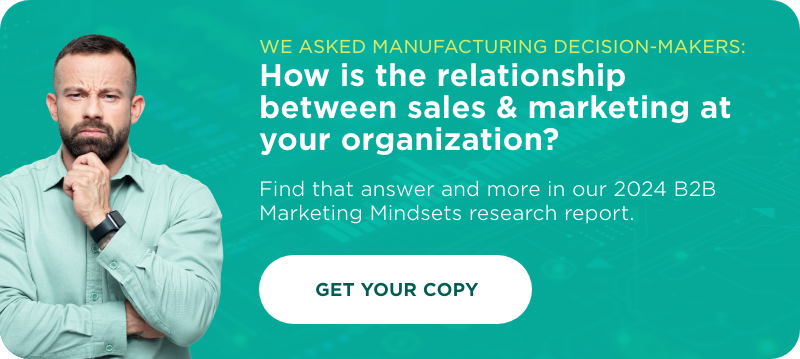Your website can help you close more sales in less time. Here’s how.
As marketers, our main job is to help businesses built revenue. We do that in a variety of ways, from increasing their brand saturation on the market, to growing traffic to their site, to convincing that traffic to enter into an automated workflow.
But sometimes we hit a bottleneck: Our customers suddenly get more leads that their sales team can handle. Ideally, they’d be able to hire on more sales people, but this takes time. So the other thing we try to do is look for ways to shorten a sales cycle, so a team member doesn’t have to spend as much time on each lead that comes their way. Here are five strategies to accomplish that task.
1. Attract higher quality leads.
One thing that can slow down your cycle is if your leads coming your way aren’t likely to convert to customers. So long as this traffic is just on your website, it doesn’t really matter, but if they begin to convert to leads that use up a lot of time without ever making a purchase, that could be bad for your business.
Your website can help solve this problem by prequalifying some of the leads that come your way. For instance, asking about their project budget on a signup form can give you a sense about whether that prospect is serious or not. This will discourage people with a budget of $100 from contacting you if your base project price is $1000.
2. Target keywords that indicate a readiness to purchase.
If you’re an ecommerce store, another way to attract higher quality leads is to focus your keyword strategy on search terms that indicate the searcher is ready to make an immediate purchase. This might be any location-based “near me” searches, or long-tail searches for specific products.
Read our blog: Is Your Keyword Strategy Aligned with Your Brand?
Someone searching for “best laptops for family” is probably still in the research phase of their buyer’s journey. Someone searching for “14-inch touchscreen laptop with 8 GB memory and 256 GB hard drive” has already gone far enough down their buyer’s journey to know exactly what they want, and now they’re just comparing prices against some of the more marginal benefits.
3. Create automated marketing material that targets every stage of the buyer’s journey.
Automated marketing can also save your sales team a lot of work by taking on some of the burden for them. But to make sure those leads become closed sales, you need to guide them along the journey with well-timed content. Traditionally, the buyer’s journey is comprised of four stages:
- Attract: More traffic to your website means more leads means more likelihood of ready-to-purchase leads. This is essentially what we were talking about with tip #1: if you create the kind of content that will bring in the kind of customers you want, you’ll have less work to do getting them from Point A (prospects) to Point B (customers).
- Convert: The critical stage to transform casual visitors to brand loyalists. Some visitors only need a small nudge to add your product to their shopping cart and complete the checkout process. Others need to do a lot of research. Conversion-focused content means that you are their primary source for product research, which means you can tell your own story however you want to.
- Close: Get your buyers off the fence. We’ve all heard that you should Always Be Closing, and that’s what this content is for. While you need other kinds of content to bring leads in and win them over, closing content is what helps them pull the trigger on making a purchase.
- Delight: Prep your customers to make another purchase. Current customers are more valuable than new leads, because they’ve self-selected into a pool of people who are interested in your products and services. If you’ve sold them once and they’re happy with what they got, they’re more likely to make another purchase. Delight content helps them feel that their purchase was the right choice.
Read our blog: Understanding the Buyer’s Journey for Your Marketing Workflow
4. Grow your customer retention rate.
Building on that last point, maintaining healthy customer relationships is essential for long-term success. It takes far more resources to win someone over to your brand than it does to retain them, but you should never take your current customers for granted. Think about how you can market yourself to them so that they continue to have positive associations with your brand.
5. Stay engaged using email newsletters and social media.
Sometimes, shortening your cycle means expanding your sphere of influence in a way that is relatively low-resource. If you catch someone’s eye one day and they start following you on social media, they may ultimately take longer to close a sale. But when they are ready to purchase, they’ll make that decision a lot faster, because they’ve been on your periphery for much longer.
Read our blog: Why Your Business Needs a Converting Website
They key is that, by maintaining marketing resources like newsletters and social media, you’re not expending a lot of effort to maintain contact. You can still focus most of your effort on those prospects that are ready to make a purchase, while priming new prospects to come through your system faster once they’re ready.
If your website isn’t shortening your sales cycle, it’s not doing its job.
Websites are a brand’s most important marketing tool, and they’re only going to become more of a focal point as more and more users continue to turn to the Internet as a primary information source. If your website isn’t drawing in interested customers through SEO, converting those customers into leads, convincing those leads to become customers, and reassuring them that their decision was correct, then it’s letting your brand down.
If you’d like it to do all those things, contact us. We can build a website that’s so good at converting leads and bringing in new business, it practically pays for itself.






